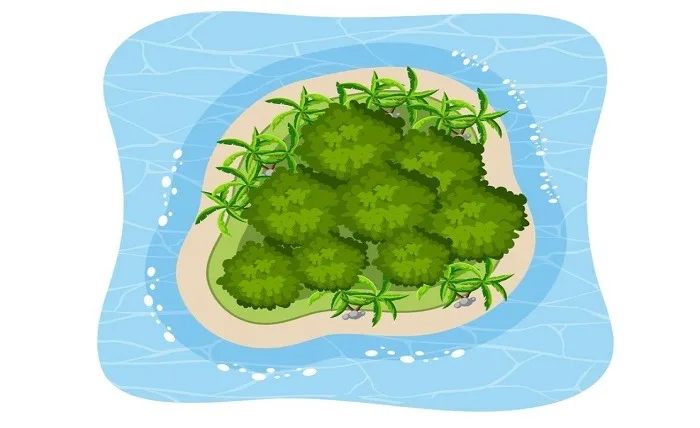Growing plants and fish simultaneously might sound like a challenging endeavor. But what if I told you there’s a sustainable, efficient, and almost self-sufficient method to do it? Enter aquaponics—a solution that has been growing in popularity among hobbyists and professionals alike. As someone who’s seen the wonders of aquaponics first-hand, I’ve decided to share some insights that could help you make the most out of your system. And if you’re wondering where I learned these handy tips? Much of my foundational knowledge came from Alec Deacon’s detailed guide on the subject: Backyard Liberty.
1. Understand the Basics of Aquaponics
Aquaponics is a symbiotic relationship between fish and plants. The fish waste provides an organic nutrient source for the plants, and the plants help purify the water for the fish. But it’s more than just a simple give-and-take.
- The Nitrogen Cycle: In a fish tank, ammonia from fish waste can become harmful if not treated. In an aquaponics system, bacteria convert this ammonia to nitrites and then nitrates, which plants can absorb as a primary nutrient source. Basic anatomy knowledge can be beneficial in understanding this process more deeply.
- The Role of Plants: Plants absorb these nitrates, effectively cleaning the water that goes back into the fish tank. Think of them as the natural filter for your aquatic buddies.
2. Opt for Hardy Fish and Plants When Starting Out
Beginners might want to start with hardy fish like tilapia or goldfish. These fish species can withstand fluctuations in water conditions, giving you a margin for error as you learn the ropes. On the plant side, lettuce, basil, and watercress are great starter options.
3. Maintain the Right Water pH
The ideal pH level for an aquaponics system generally hovers around 6.8 to 7.2. Regularly test the water using a pH meter. If the pH is off, it can affect nutrient absorption for the plants and might harm the fish.
4. Monitor Water Temperature
Just like how you’d want to strengthen your core without heavy equipment, maintaining optimal water temperatures is vital for the health of both fish and plants. While the exact temperature can vary depending on the fish species, most aquaponic systems run efficiently between 70°F to 76°F.
5. Regularly Check Your System
While aquaponics is relatively low-maintenance, it’s crucial to inspect your system frequently. Look out for clogging, ensure the water is circulating well, and check for any signs of disease in fish or plants. Also, observe your fish’s behavior; any irregularity can be an early sign of potential problems.
6. Supplement When Needed
Although fish waste provides many nutrients, sometimes plants might need additional supplementation, especially for elements like iron, calcium, and potassium. If you notice any plant deficiencies, consider adding these supplements in chelated forms, as they’re more readily absorbed by plants.
7. Educate Yourself
Finally, the key to success in any endeavor is continuous learning. Dive deep into books, workshops, and online resources. Engage in communities and forums where you can exchange knowledge with fellow aquaponics enthusiasts.
Taking care of an aquaponics system can be as satisfying as it is beneficial. Whether you’re aiming for food sustainability, a hobby, or simply the joy of nurturing life, aquaponics can be a rewarding journey. And if you ever need a guide, Alec Deacon’s Backyard Liberty is a fantastic starting point.
The Role of Beneficial Bacteria
It cannot be stressed enough how vital beneficial bacteria are to a thriving aquaponics system. These microscopic helpers colonize various parts of the system, especially the grow beds. As they break down the ammonia from fish waste into nitrates, they make it accessible and beneficial for plants. It’s nature’s way of recycling and turning waste into gold! Starting an aquaponics system without a good population of these bacteria is akin to planting a garden in sterile soil. Therefore, it’s crucial to ensure that your system is well-colonized before introducing fish and plants. Some enthusiasts use established aquarium water or specific bacterial starter cultures to jump-start this process.
A Sustainable Approach to Farming
Aquaponics is not just an efficient method of farming; it’s also sustainable. In a world grappling with climate change, depleting resources, and a growing population, sustainable solutions are the need of the hour. Traditional agriculture requires vast amounts of water, and a significant portion of this is wasted due to evaporation or runoff. Aquaponics, in contrast, uses just about 10% of the water used in traditional farming. Moreover, there’s no need for chemical fertilizers or pesticides. The fish provide the nutrients, and because there’s no soil, soil-borne pests are not a concern. It’s a holistic system where every component, from the smallest bacterium to the fish and plants, plays a crucial part.
Harvesting Your Efforts: From Tank to Table
One of the most satisfying moments for any aquaponics enthusiast is the harvest. Whether it’s plucking fresh, pesticide-free greens for a salad or netting a fish for dinner, the feeling of consuming something you’ve nurtured from scratch is unparalleled. It’s not just about the produce’s quality, which is undoubtedly superior, but also the knowledge that it was grown in an eco-friendly manner. The freshness is undeniable, given that it moves from your system to your plate in a matter of minutes. Plus, given the control you have over your system, you’re assured of no harmful chemicals in your produce. It’s a win-win situation for your health and the environment!



